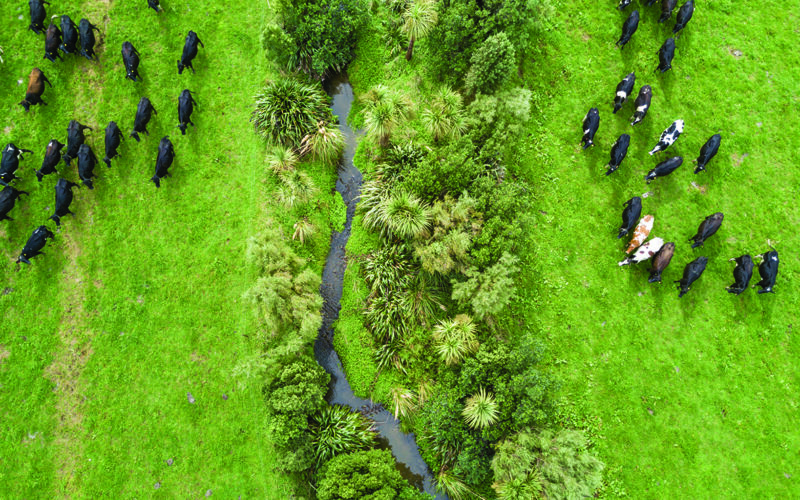Freshwater farm plans are on the horizon, and many farmers and agriculture professionals are realising that furthering their knowledge about how to implement those plans is an essential part of their business.
Massey University has been operating intermediate and advanced Farm Environment Planning courses for two years. The courses provide students with the detailed knowledge and integrated skills necessary to produce New Zealand industry-standard, farm-scale, freshwater Farm Environment Plans for dairy, beef and sheep and arable farms.
The intermediate course is delivered through online distance learning and intended to facilitate a flexible learning style. It consists of approximately 100 hours of online study including 50 hours of self-timed learning activities, 48 hours of assessed learning, and approximately 1-2 hours of video conference tutorials and assessment.
The Advanced Farm Environment Planning course equates to approximately 150 hours of work and is designed for online blended delivery. Four hours are designed for self-timed access, two hours are scheduled for Zoom tutorials and 24 hours for “in person” farm engagement visits on dairy, arable and sheep and beef farms. The participants then leave and develop their own freshwater plans.
School of Agriculture and Environment Associate Professor Lucy Burkitt co-ordinates and teaches the intermediate and advanced Farm Environment Planning professional development courses.
The Farm Environment Planning course focuses on teaching students the skills to develop freshwater farm plans.
“Many participants are considering a career change or looking to become more involved in freshwater farm planning. Some realise that they need to upskill in their current role,” Burkitt says.
“Farmers are beginning to attend. Some are fulltime farmers and others also take on consulting work. The recently released Cabinet paper has clarified some of the freshwater issues and requirements, but it’s not totally clear cut.”
Many of the participants are already comfortable with nutrient management. The course also covers the regulations, Te Mana o te Wai in the catchment context, and cultural community values associated with waterways on or near the farm.
The course aims to have the participants in an advantageous position when the freshwater regulations are implemented. While it’s still unclear what the new plans will involve, the courses will be modified when the situation is clarified.
This year a freshwater ecology component has been added to the courses, based on developing information provided by the Ministry for the Environment.
“The intermediate course has a virtual farm tour and the students then produce a farm plan based on it. We’ve put a lot of time and effort into the videos, spatial information and flyovers,” Burkitt says.
“The course focuses heavily on the farm’s natural resources and how they influence the risk of contaminant loss. Many people seem to find this aspect very valuable and have never realised its importance.
“Farmers need to keep ahead of the curve so they’re not blindsided by new regulations and requirements. Knowledge is power, and if they understand what’s going to be required they’ll feel much more comfortable.”
Taranaki farmer Donna Cram recently took the Intermediate Farm Environment Planning Course. She and her husband milk 280 cows on their 117ha Auroa dairy farm.
She is the chair of Taranaki Catchment Communities, on the executive of Taranaki Federated Farmers, and has just been elected to the Taranaki Regional Council.
Cram wanted to gain an understanding about the issues for her farming business and understand their implications, and mitigate their risks surrounding freshwater.
“I also wanted to understand how we could help our farmers understand more about fresh water management and help with solutions. Being the chair of Taranaki Catchment Communities meant that I had to learn about the sheep and beef aspect too,” Cram says.
The course component on the Massey sheep and beef farm gave her a wider understanding of freshwater issues.
“The course was challenging but very worthwhile. The staff are very accessible and always replied promptly to any queries.
“Farmers need an understanding of the critical source points on their farms. They should be aware how they can mitigate these critical effects on waterways outside their farm, and that there are things they can do to improve the waterways for their entire community.”










